YUKI YAMATO
PEOPLEText: Eri Yamauchi
“That Girl Is Dancing by the Seaside / Ano ko ga Umibe de Odotteru” is Yamato’s debut work which received a special judges’ prize at the Tokyo Student Film Festival, and set attendance records day after day during its limited one-week run at a mini theater in Tokyo. As a director Yamato is known as “the next generation’s fantasist” and her prospects are great after receiving rave reviews for her shorts and mid-length stories at many awards ceremonies.
Yamato’s works are filled with lights, illuminating the rash and innocent lives of youth, reflecting diffusely the boring the boring parts that might be forgotten little by little. Yamato captures girls who have moved beyond an era where “now,” “here,” “school,” and “hometown” were everything to them, and have started to run believing that they are one of a kind, though they are still puzzled by “love” and “dreams.” As an important factor in creating them, she has inlayed her films with high culture, such as philosophy, literature and ballet, along with subcultures such as idols and rock bands. Her films vividly capture “youth living in the moment” and are enthusiastically popular among youth.
We interviewed Yamato, who released her latest film “Count Five to Dream of You / Itsutsu Kazoereba Kimi no Yume” at Cinemarise in Shibuya on March 8th, about her filmmaking philosophy, her own youth, and her next goal.
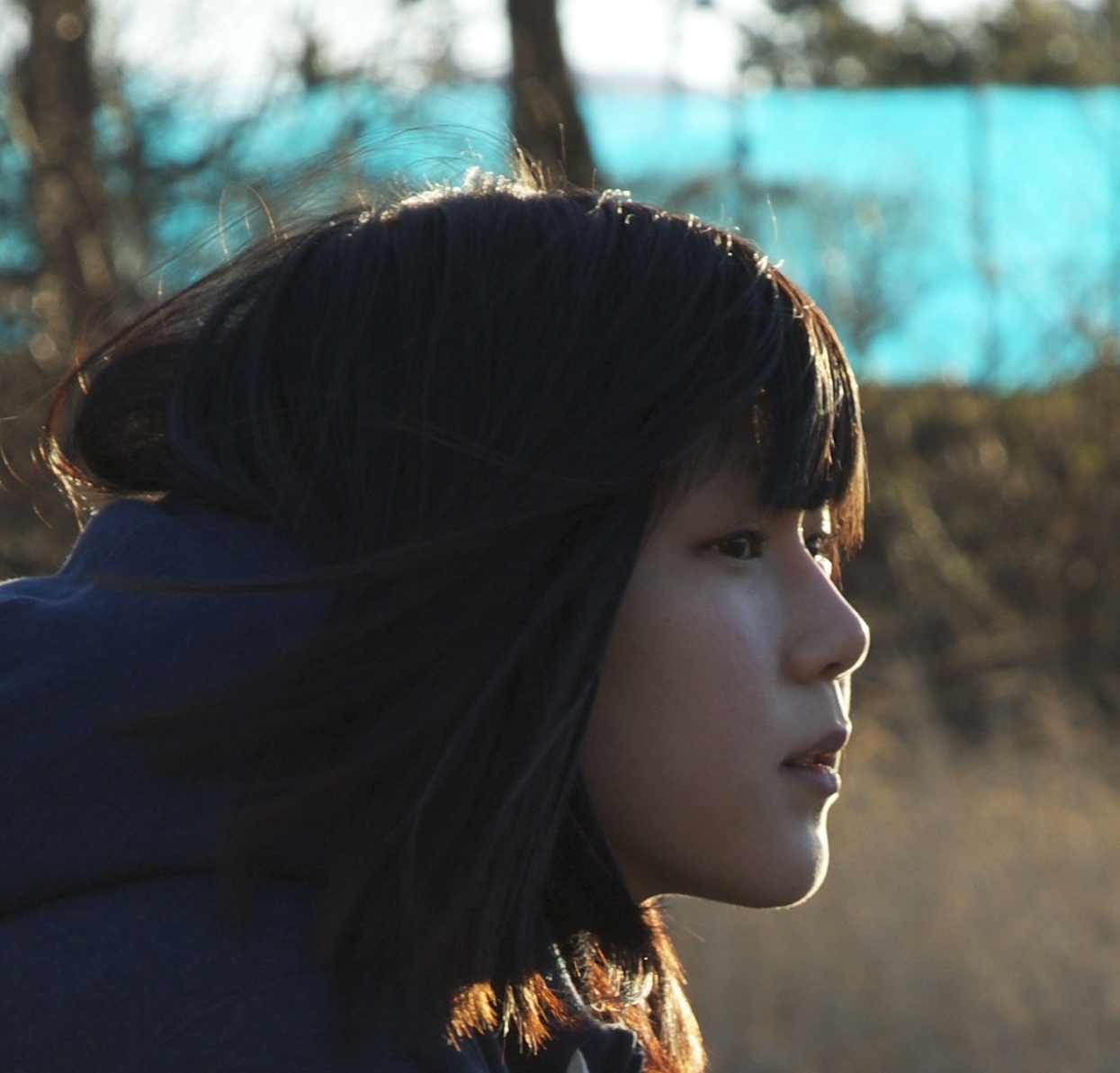
Let us ask you some questions about your self. We heard that you started shooting films since you felt that there were things that you couldn’t express with just words, although you wanted to be a philosopher and studied philosophy in university. After walking on this unique path, you started to work with film. What was your original reason behind wanting to be a philosopher?
I got into reading so much when I was in middle school. Although I was reading pure literature, I came to realize that I liked reading books containing philosophical questions on “how to live life.” From there, I could naturally connect my thoughts to my dream, which was philosophy. I remember how I would tend to choose philosophical books while their impressions remained in my head even until now. This currently has an influence on my critical mind when I shoot a movie, but it also might be meaningless if this is not something that audiences can commit to their life.
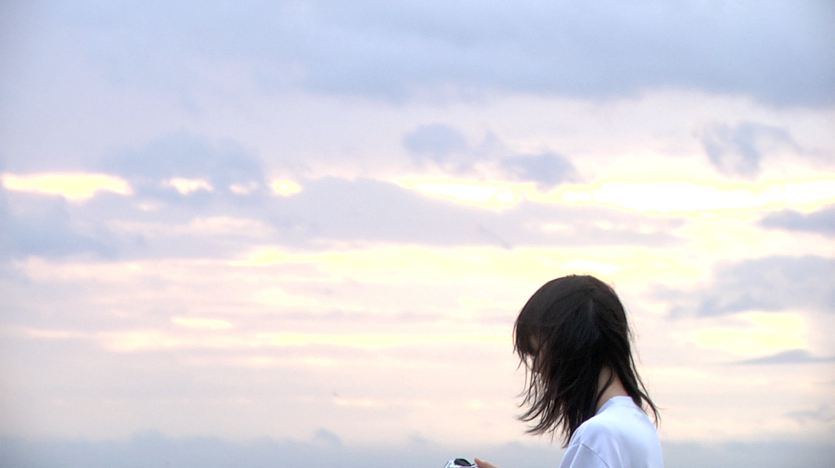
“That Girl Is Dancing by the Seaside” © Sophia University Film Makers 2012
While the majority of the main characters in your films tend to be middle or high school students, how would you describe your own youth? Maiko, the main character from “That Girl Is Dancing by the Seaside” left a very strong impression. Were you similarly depressed?
Actually, I myself was not really like that. As for Maiko, I had a friend like her. I realized that I had been using her as a model subconsciously after the film was finished. I was like “Buddha Sugawara.” A strong-minded, beautiful woman like Maiko stands out far too much in the country side, but I thought people like her were more interesting so I would watch them from the side.
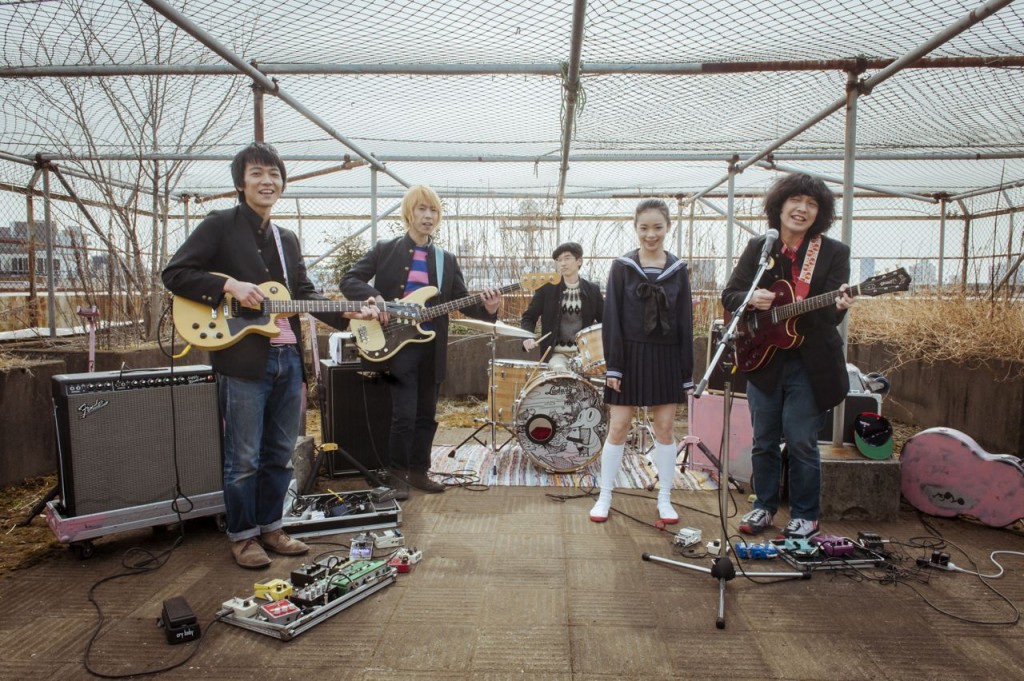
“Like a Fairy Tale” © 2013 Sleeping Goods Troupe/ MOOSIC LAB
Let me ask some questions about your film. I’d like to ask you about “Like a Fairy Tale” first. How did you build a story around the pre-existing world view of the band, Fairy Tale? Also, if you have any stories about things that you discovered or had a hard time with when you were shooting this film, please share.
I like the band Fairy Tale, and I had hoped to shoot a film filled with their music. I thought that I could only commit to the things that their music is bringing within a story. With this “MOOSIC LAB” project, I had hoped to shoot Fairy Tale and my dream came true. The planning process for this film was quite different from my debut, but since Naoi entrusted me with this project, I could include elements that I wanted to in the film without too many outside restrictions. Also, for this work, it was a big thing for me to let others besides myself take care of filming. I was trying to see how I would accept someone else’s sense of beauty.

“We Are Not A Band! The Movie” © 2012 Warner Music Japan
The different stories pictured happening at shows and at high school are shown alternatively with a certain flow, and this initially felt a bit incongruous. However, as the story advanced, these two pictures connected steadily through both the story and the music, and the way they united was very interesting to me.
The reason why I used two pictures was a strong feeling I had of wanting to include externalities and foreign-body sensations in my film. The interesting part of film is being able to include unexpected things that don’t happen in the verbal world, and I was hoping to radically accept the externalities and foreign-body sensations into it.
I wanted to have other characteristics in “Like a Fairy Tale,” so I let other people handle the camera. Also, I specifically decided against having some kind of magnificent climactic scene like you would in a conventional movie since it would’ve been to good of a match. As for the band, there might be another band that would’ve been better suited to the sense of incongruity in the movie, but I really wanted to choose the Fairy Tale. Along with the feeling of love, I believe that I will not be able to create films if I ignore the importance or foreign-body sensations.
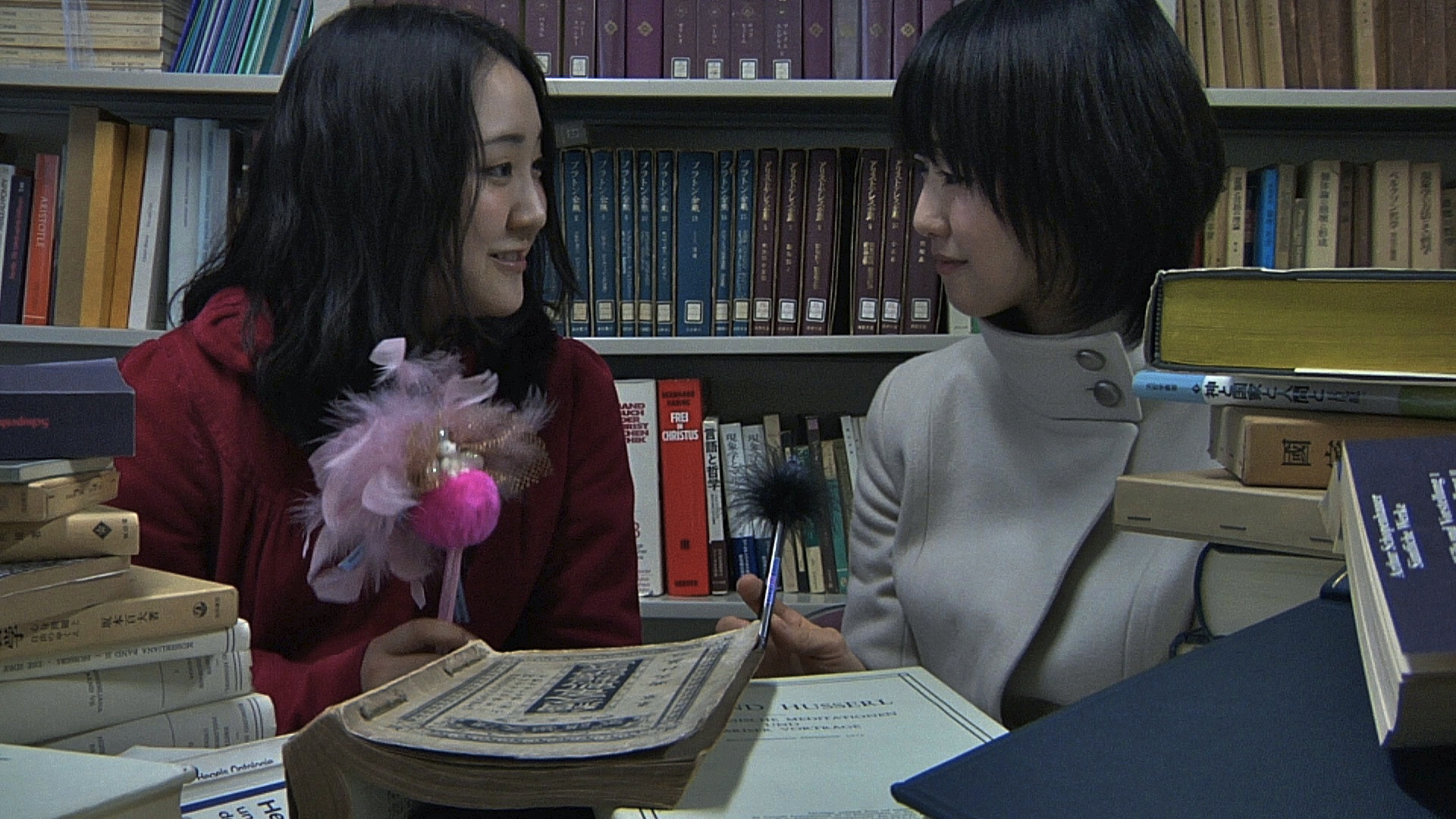
“Her Res – 3 Cases in Which You Will Find Me in 3 Minutesfive“ © 2012 Theatersing
The long takes in your films at dusk and at night leave a very strong impression. This makes the contrast between them and the bright scenes particularly memorable. Is there any reason why your film has so many dark scenes?
Especially at the beginning, there’s something about dark scenes that is so attractive to me so they physically tend to be dark scenes. It might be because I can create light, but that paradoxically can also only create shadow.
This sounds like it relates to the externalities and foreign-body sensations that you mentioned earlier. Do you look for actors with a bit of unpredictability in their performances? How much acting instruction do you provide?
It varies depending on who I have cast in the leading roles, rather than the work itself. I was only thinking about devoting myself to a person in front.
I felt that there was something more real about “That Girl Is Dancing by the Seaside” compared to other movies, from the perspective of having scenes shot at interesting angles and blurry pictures unlike the neatly arranged pictures on a TV.
If I look at it on a big screen, I wonder what I was thinking when I shot those scenes at such weird angles. A grandma scolded me loudly when I was shooting a footbath scene, and somehow she ended up in the movie. I didn’t know what else to do aside from just continuing to shoot, so my mind was always stuck in place. Somehow, though, I’ve managed to receive some good reviews from people who watched the movie. I wonder why.
I heard that you are now actively writing again, publishing pieces in magazines and doing poetry readings. Again, what do you think of the differences between film and writing? Also, do you think expanding your artistic activities will influence your films?
The main difference between film and writing is the subject. In writing, the author necessarily undertakes the subject, but in films, I can let others express my thoughts. I’m attracted to the redundancy of film as a way of expressing myself.
This might be slightly off topic, but recently I’ve been hearing a lot about people who used to belong to the film or another entertainment industry who are now writing novels. I sympathize with how they focus on the personal. I believe that people who leave an expressive genre outside of novels and enter the world of words hope to expand that world with the use of the personal. The difference in my writing style before shooting a film and now is that I want to write something that will lead me to outside connections and not just end in the writing.
In a related story, I had an actor enter from the side of the stage at a showing of “That Girl Is Dancing by the Seaside” in Tokyo. When I was in university, I liked movies and often went to see them, but, I must have felt that it was boring to just have the actors walk out on stage to say hello. I’d rather have the actors recite some lines that were prepared or have them act out a story that draws parallels with elements inside and outside of the screen to expand the story at the meet and greet after the showing.
The majority of your main characters are girls. Do you think that you will keep filming girls?
As long as the demand is there, I think that I’ll keep filming girls, but I do want to have a boy as a main character too. It’s not that I only want to shoot girls. For example, in the case of girls’ comics, some authors keep making girls’ comics, while others move on and switch over to women’s comics and some move to men’s comics. I’m not sure about the direction that I’m heading to, but I’d like to show girls in the best way possible in my films. Eventually, I might feel like switching over to featuring ladies or men.
What is film to you?
Film is something that is right in front of me, right now. I dreamed about going into comics or the publishing industry when I was little, or becoming a philosopher when I was in university. But as a result, I am in a totally different world: the film industry. I don’t feel like film is a temporary thing to me. I’ve never felt that I wanted to do something else were I to fail in this industry. Film is something that is currently in front of me and also a last wall to conquer.
Do you mean that film is the best way for you to express yourself?
I think if the idea of film is clear to me, I would describe it as matching me. The only thing that I can be sure of is that film is the type of media that allows its own form to be broken. For example, if one person says that random footage of family videos is a movie, that is a movie. As long as there is a screen and an audience, anything could be a film. If that is no longer the case someday I might quit making films. However, I believe that I could film anything in this world. If I believe that anything I do could be a film, I can’t imagine switching to another media.
If you have any themes or goals that you’d like to explore in the future, could you share them with us?
No matter what I use as the motif, I’d like to include philosophical and literary questions in my films. I don’t want to make just a beautiful movie. The philosophical and literary problems are things that I can constantly connect to in my own self, so I’d like to shoot something that relates to question of how to live. For example, even if I decide to have a Brazilian man living on the opposite side of earth as the lead, I want to connect him to his current life.
I believe that the audience for my films has a very high antenna. Usually, young people who are interested in trendy culture and the older generation of cinéphiles make up the majority of people who watch my films. However, in the countryside, the majority of people have to go to a multiplex or rent a VHS or DVD at rental stores in order to watch movies, but my goal is to make a film that can be shown at such places. I want young boys and girls from the city to the countryside to see my films. Looking back myself, things that I saw when I was a girl have had a huge influence on my later life, and that makes me want to confront sensitive issues from that same time of life with my films. I’d love to keep filming until I can reach that point.
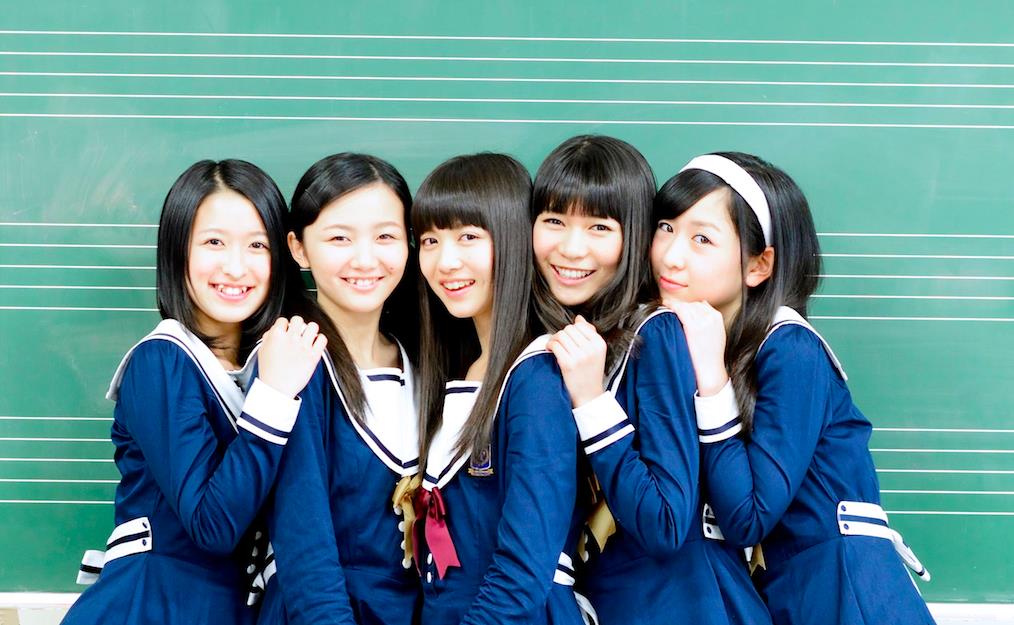
“Count Five to Dream of You / Itsutsu Kazoereba Kimi no Yume” © 2014 “Count Five to Dream of You” production committee
Lastly, let me ask you some questions about your latest film “Count Five to Dream of You / Itsutsu Kazoereba Kimi no Yume.” What was the motivation behind selecting the popular idol group, Tokyo Girls Style, as the main characters of the story? Also, can you share any noteworthy parts of the movie?
Hariya, the writer of the story, and Naoi from Spotted Productions who are in charge of this film offered me the chance to make a movie with these girls as the main characters. The most noteworthy thing about the film is these five girls from Tokyo Girls Style. Each of their splendid charms is manifest, so much so that it makes hard to say who is the actual main character. But, really, the scenes that the audiences like and remember the most are always the best ones in the film. I’d be very happy if the audience could discover for themselves what is happening in their hearts.
Count Five to Dream of You / Itsutsu Kazoereba Kimi no Yume
Release date: March 8th, 2014 at Cinemarise and other theaters
Distribution: Spotted Productions
https://5yume.jp
Text: Eri Yamauchi
Translation: Yumico Miyagawa
Photos: © SPOTTED PRODUCTIONS





